Or go to our Shopify Theme Detector directly
Top 10 Strategies For Conversion Rate Optimization
Last modified: October 18, 2023
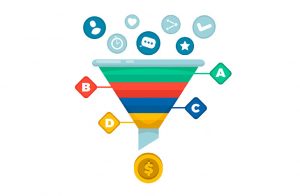
Any online shop needs to convert as many shoppers as possible. Even the best-converting websites are only converting about 5% of their website visitors. However, on average, only about one in fifty visitors to your website will convert.
Improving the number of people who buy (or take another action) on your website, is known as Conversion Rate Optimisation. It is a complicated process where you design your website and sales process to make it more effective at converting visitors to your website.
In this article, we will look at how you can optimize your website so it performs better. But first, you’ve got to understand why conversion rates might be low.
Why Are Conversion Rates So Low?
There are numerous reasons why conversion rates are traditionally low. For starters, the average number of touchpoints (interactions) between a brand and a lead is 5-12 before a sale is made. That includes the number of times a customer visits your website, speaks to a member of your sales team or perhaps interacts on social media.
There could be numerous reasons for this, but the main cause is often that they are just researching their purchase at one time and don’t have the time/funds to commit to a purchase. Sometimes, they want to know what their budget is for the purchase or what you have to offer.
Conversions could also be low because there are problems with your website design. Design can have a big influence on visitor behaviors. Another key factor that can impact sales is your delivery options. In fact, delivery costs are one of the main reasons why people don’t convert.
Another common factor is trust. If customers don’t trust you with their information, they’re not going to provide it.
You have to overcome these problems if you want to succeed. This is where these 10 conversion rate optimization strategies will help.
Strategy One: Minimization
The first strategy is to make your website less busy. Research has shown that when your website has less clutter, you can direct customers to important call-to-actions and other elements that you want them to see on your website. The less distractions, the more visitors that will follow through with actions.
Another bonus is that minimization of your website will improve speed. Research has shown that 25% of visitors will abandon your website if it takes 4 seconds or more to load. Minimization reduces load times and therefore conversions. It can also impact your page ranking on search engines.
Strategy Two: Think About Placement
Another key aspect is to think about the placement of items on a page. Users tend to read more of what is on the left-hand side of the screen or at the top. So this is where you need to put the important information.
Try to make your ‘go to checkout’ a floating bar across the top of the screen. Therefore it is always possible.
Strategy Three: Build Trust With Audiences
Another key aspect is to build trust with audiences. There are several ways to do this. The first is to include trust badges stating what payment processes you accept. Another is to add reviews. There are lots of review apps on Shopify that will import product reviews from AliExpress and other systems.
There are some that can also automate review requests.
There are other factors that can improve trust, including having live chat on your site. You can also add social media feeds. Social media profiles which you have lots of followers on, can improve trust because they act like reviews by providing peer recommendation trust signals.
Strategy Four: Gamification
Gamification is one of the best options when it comes to conversion because it taps into the human need to compete. Many aspects of gamification can be tied to building a mailing list or ensuring that your visitors are buying. A very popular gamification is a wheel-of-fortune game. This is where visitors are offered free spins on a wheel to win a prize.
To claim their prize, often a discount or a free ebook, the user provides an email address. There are several apps that, on Shopify, can really help you convert more customers. One of these is Vitals, which is an app that has more than forty functions.
Strategy Five: Coupon Codes
One of the main reasons why customers leave your store is that they think your prices are too high. That leaves a simple option that allows you to convert more visitors to your store: coupons. Today there are lots of ways to give your audience coupons to buy from you. You could just have coupons and advertise them on coupon sites.
However, the longevity of the customer’s lifetime is probably limited for this. What you really want to do is to get the customer to give you their email address and offer them a discount code for that offer.
For the best results, to ensure coupon code sites don’t just steal your codes and pass them on to unsubscribed customers, is to have these codes automatically generated when the customer subscribes.
Strategy Six: Utilize Shoppable Instagram Stores
Instagram is a powerful social media platform and it is highly used by millennials. And 84% of this age group are influenced by what they see on this channel. You can upgrade your Instagram feeds, so that when a user clicks on the picture it can be added to a cart.
Your feed can be embedded on your home page for quick access to products. This speeds up the process of buying for customers and gives you a great way to generate sales.
Strategy Seven: Adjust Your 404 Page
Your 404 page is a page that displays when someone has entered an incorrect extension to your website. This could be because of a typo or because there is a broken link. The 404 page is often underutilized. Instead of just showing the default 404 page, change it to feature top performing products, featured collections, or content you think your visitors might like.
Strategy Eight: Build A Great About Us Page
Often, the about us page on a shop is underutilized. You need to tell a story with your about us page, to build a strong identity and sympathize with your audience. They need to feel an emotional connection with your brand and for the customer to realize the lifestyle that is associated with your products.
Try to build a story of your product using the following questions:
- Where did your idea come from?
- What makes your products special?
- What makes your team special?
- Describe the average day in the life of your customer.
Strategy Nine: Make Sure You Have Lots Of Contact Information
Customers want easy-to-find contact details for your business. Research has found that 44% of customers will abandon your store if they can’t find a phone number or any other contact information. They want to share their thoughts and perhaps ask questions.
So be sure that you have all the basic contact information on your website. And don’t have a generic Gmail or Yahoo email. They look like you’re an amateur when you want to be building trust with the audience.
Even if you’re dropshipping, don’t forget to include a physical shelf either. Many countries have this as a legal requirement and customers like to see there is a physical location for your business.
Strategy Ten: Ensure Your Website Is Mobile Ready
The final strategy is to ensure that your website is mobile-ready. If it isn’t, you could lose more than two out of every five shoppers. This could lead to a loss of 40% of your revenue. Every Shopify store is optimized for mobile, luckily, so it is a good reason to select Shopify as your store’s software.
| # | Name | Image | |
|---|---|---|---|
| 1 |

|
Vitals
|
|
| 2 |

|
Sales Rocket
|
|
| 3 |

|
Because: Increase Conversions
|
|
| 4 |
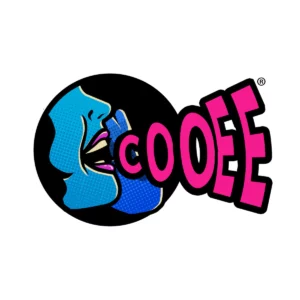
|
Cooee ‑ Convert more with AI
|
|
| 5 |

|
Preloader
|
|
| 6 |

|
ModeMagic - Store Conversions
|
|
| 7 |
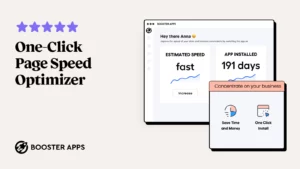
|
Booster: Page Speed Optimizer
|
|
| 8 |
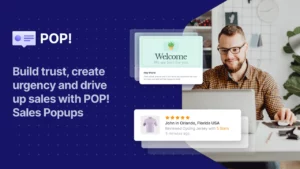
|
Sales Notification | Sales Pop
|
|
| 9 |

|
Hextom: Free Shipping Bar
|
|
| 10 |

|
Ultimate Sales Boost
|
|
|
Show More
|
|||
Enhancing Conversion Rate Optimization (CRO)
Understanding the Core of CRO
Conversion Rate Optimization (CRO) is not just a buzzword in the digital marketing landscape; it’s a systematic process that empowers businesses to increase the percentage of website visitors who take the desired action.
Whether it’s filling out a form, making a purchase, or subscribing to a newsletter, CRO plays a pivotal role. It’s not just about driving traffic; it’s about ensuring that traffic converts, reducing the cost per acquisition, and enhancing the effectiveness of your marketing efforts.
Strategic Implementation of CRO
We’ve always believed in a data-driven approach. By utilizing tools and analytics, identify areas of your website that hold the potential for improvement. It’s not a one-size-fits-all scenario; each website and each business has its unique challenges and opportunities.
Analyze user behavior, conduct A/B testing, and dig into analytics to derive insights that inform our strategies. It’s a meticulous process, but one that ensures that every change, every optimization, is rooted in data and geared towards increasing conversions.
Real-World CRO Success Stories
In our years of experience, we’ve seen businesses transform through strategic CRO implementation. For instance, a simple tweak in the call-to-action text or the placement of a sign-up form can lead to a significant increase in conversions.
Optimizing product pages and streamlining the checkout process led to a reduction in cart abandonment rates and an increase in sales. Every success story is a testament to the power of understanding user behavior and making informed decisions.
Advanced CRO Techniques
Text-Based CTAs and Lead Flows
In our journey of optimizing websites, we’ve discovered the efficacy of text-based CTAs within blog posts. Banner blindness is a common issue, and to combat this, incorporating CTAs as a standalone line of text has proven to be highly effective.
Similarly, lead flows, especially the slide-in boxes, have been shown to significantly enhance click-through rates and conversions. These are not just theoretical assumptions but results derived from rigorous testing and analysis.
Optimizing Landing Pages and Blog Posts
Landing pages are the cornerstone of conversion rate optimization. Focus on A/B testing to identify the most effective design and content elements that resonate with the audience.
Similarly, for blog posts, identify high-traffic yet low-conversion articles and optimize them for better performance. It’s a continuous process of testing, learning, and optimizing to ensure that the content not only attracts visitors but also encourages them to take the desired action.
Retargeting and Messaging
Retargeting has emerged as a powerful strategy to re-engage visitors who didn’t convert during their initial visit. By serving tailored ads on different platforms, we’ve seen a significant increase in conversions.
Additionally, adding messaging features to high-performing web pages ensures that visitors receive real-time support and guidance, further enhancing the user experience and conversion rates. Every strategy is tailored, tested, and optimized to align with the specific goals and audience of a business.
Conclusion: Strategies For Conversion Rate Optimization
Optimize your website’s conversion rate with the above ten options. However, what you might need to do is to test one strategy at a time. See what makes the best impression on your audience and helps you grow your sales. Sometimes, this requires you to do some A/B (split) testing.
Keep on reading about Dropshipping on Shopify. For example 15 Best Shopify Dropshipping Themes [Apr, 2024] and 10 Ways To Improve Your Product Descriptions. Both part of our Shopify Dropshipping Apps and Shopify Dropshipping Themes lists. You can read more about Dropshipping on Shopify with our ultimate Dropshipping on Shopify guide.
-
What impact does page load speed have on conversion rates?
Faster page load speeds enhance user experience, reducing bounce rates and increasing the likelihood of conversions.
-
How often should I review and update my conversion rate optimization strategies?
Regular reviews and updates are essential to adapt to changing user behaviors, market trends, and technological advancements to maintain optimal conversion rates.
-
How can analytics tools be used for conversion rate optimization?
Analytics tools provide insights into user behavior, helping businesses understand how visitors interact with their website and make informed decisions to improve conversions.


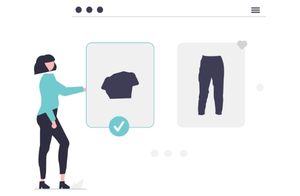


 PageFly Landing Page Builder
PageFly Landing Page Builder  Shopify
Shopify  SEMrush
SEMrush  Website Maintenance
Website Maintenance  UpPromote
UpPromote